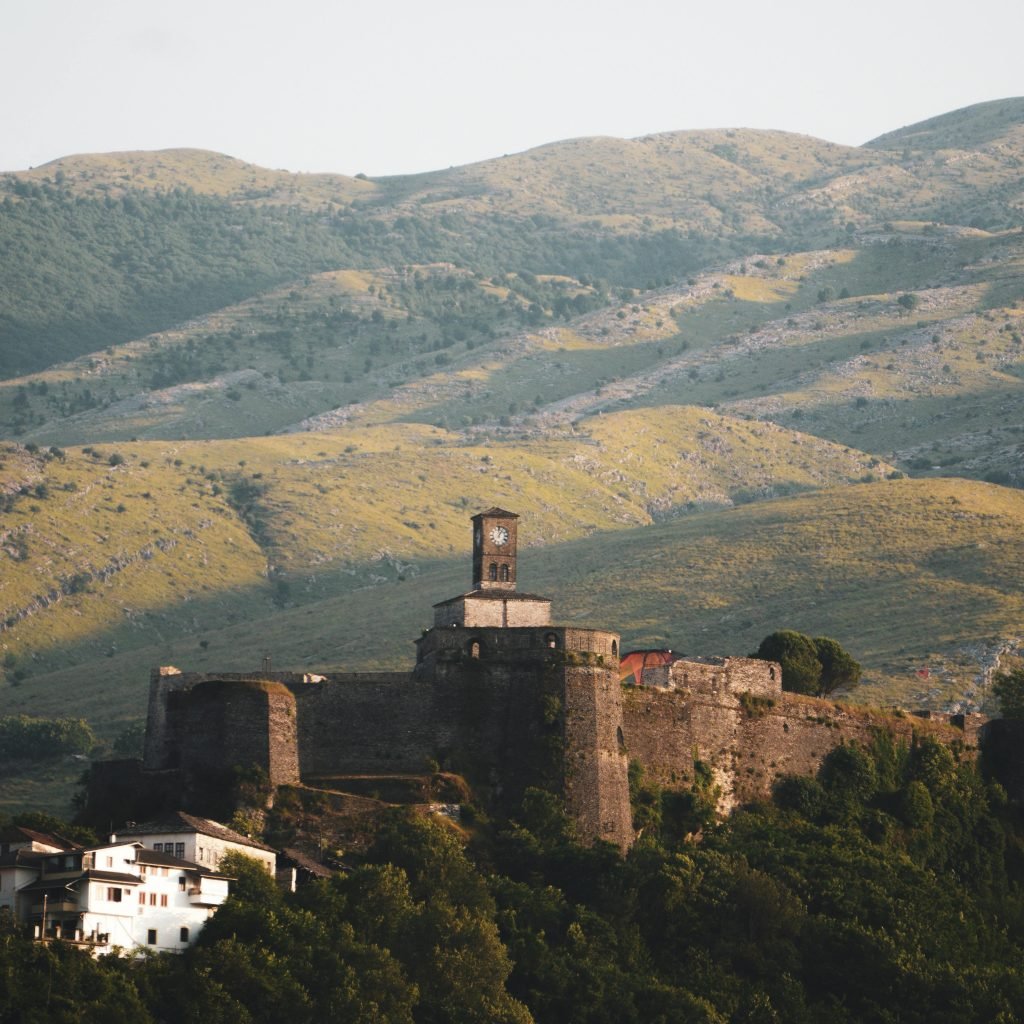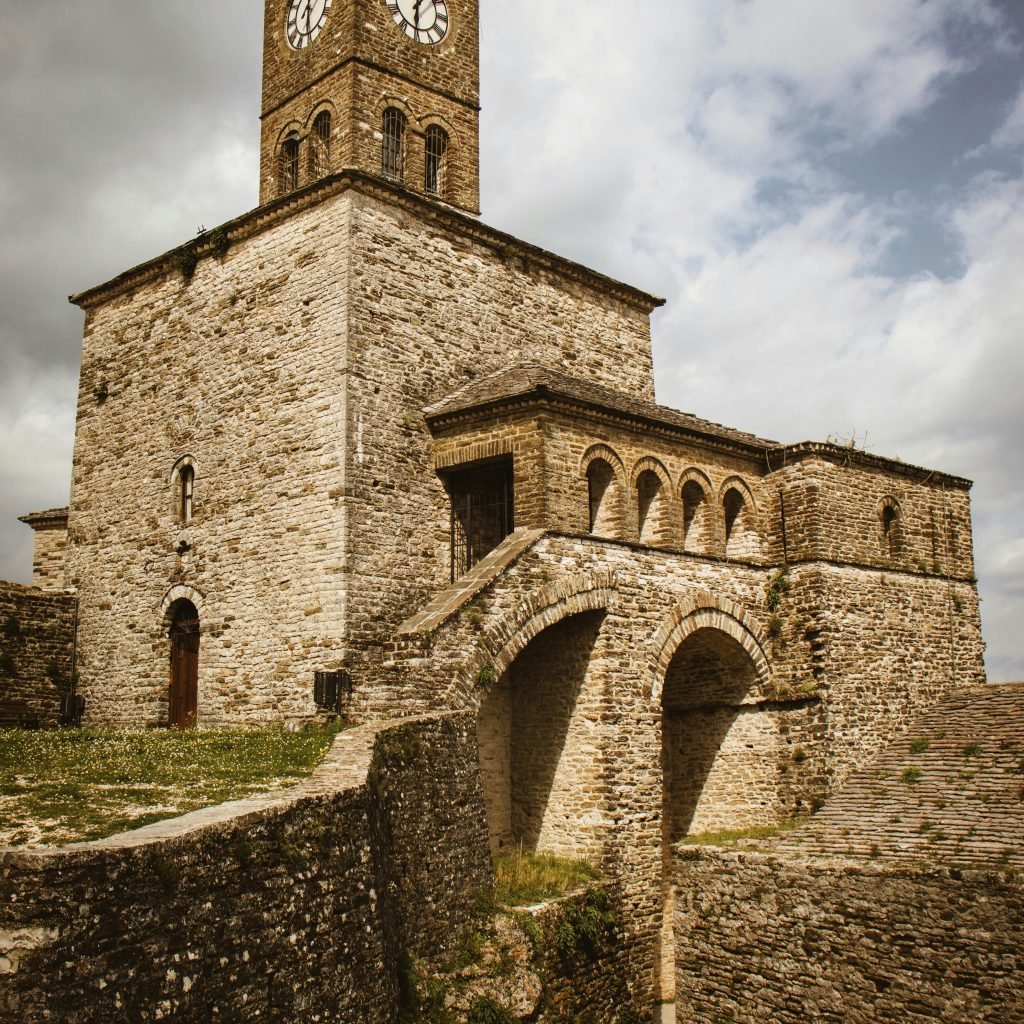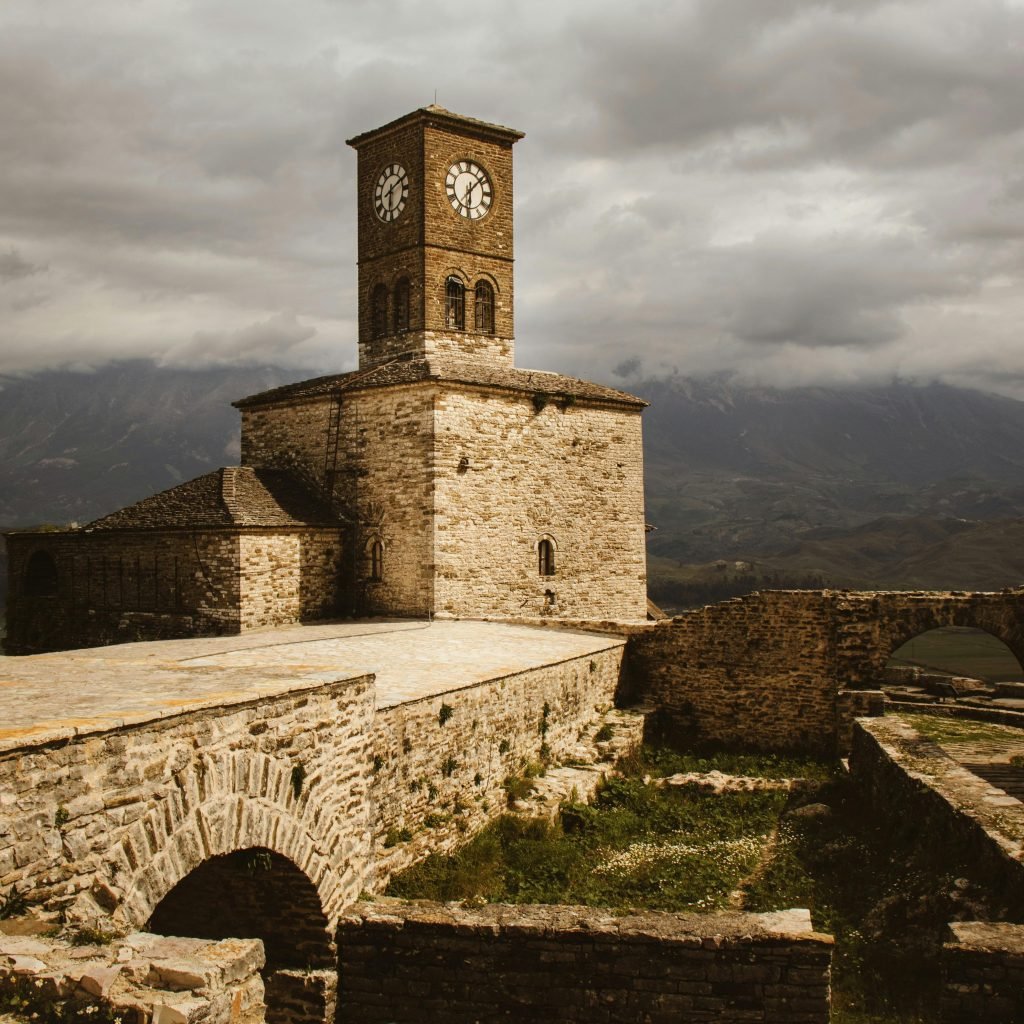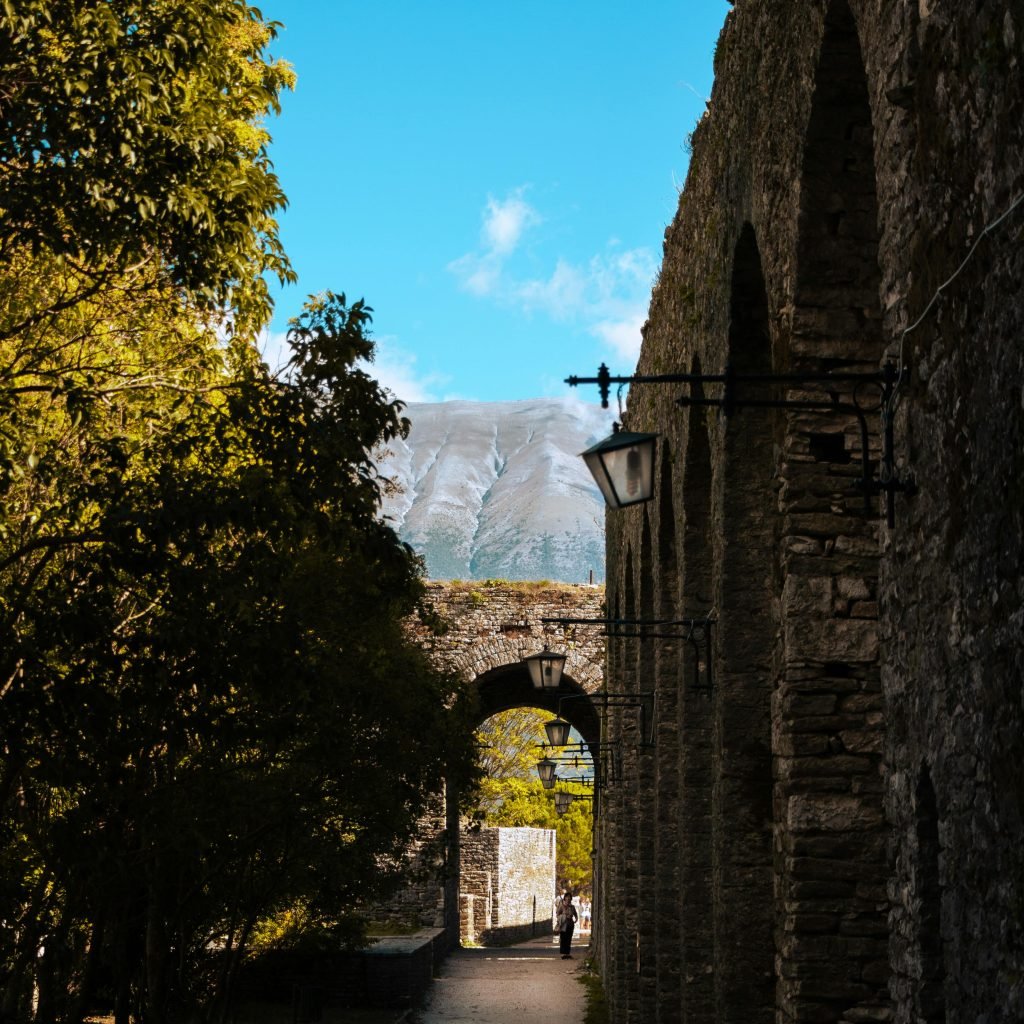Gjirokastra Castle, located in the historic city of Gjirokastër in southern Albania, is one of the most significant cultural and architectural landmarks in the country. The castle sits atop a hill overlooking the Drino River valley, providing a commanding view of the surrounding landscape and the city below.
Historical Background
Gjirokastra Castle has a rich history dating back to the 12th century, though much of the structure that stands today was built during the Ottoman period, primarily in the 18th and 19th centuries. The castle’s strategic location made it a key defensive stronghold for various rulers throughout the centuries, including the Byzantine Empire and the Ottoman Turks.
Architecture and Layout
The castle is an extensive complex that reflects the military architecture of different periods. It is built of stone and features massive walls, towers, and battlements that have been well-preserved over the centuries. The main entrance is marked by a large gate, leading to a series of inner courtyards and passageways.
- The Clock Tower: One of the most iconic features of Gjirokastra Castle is the clock tower, which was added in the 19th century. The tower is a symbol of the city and offers panoramic views of the surrounding area.
- Prison Complex: Within the castle, there is a prison that was used during the 20th century, particularly under the communist regime of Enver Hoxha. The prison cells and interrogation rooms remain as a grim reminder of Albania’s recent history.
- Armory Museum: The castle houses an armory museum displaying a collection of weapons, including guns, swords, and cannons from different periods. The museum provides insight into the military history of the region.
- Festival Venue: Gjirokastra Castle is also known for hosting the National Folklore Festival, a major cultural event in Albania that celebrates the country’s traditional music, dance, and costumes.
- Byzantine Church: There are remnants of a Byzantine church within the castle grounds, highlighting the religious significance of the site during the Byzantine era.
Cultural Significance
Gjirokastra Castle is more than just a fortress; it is a symbol of the city’s resilience and its rich cultural heritage. The castle, along with the city’s old town, is part of the UNESCO World Heritage Site designation for Gjirokastër, recognized for its well-preserved Ottoman architecture and historical importance.
Tourism
Today, Gjirokastra Castle is a major tourist attraction, drawing visitors from around the world. It offers not only a glimpse into Albania’s past but also stunning views of the picturesque city and the surrounding valley. The castle is accessible by a steep, cobbled road that winds up from the city center, adding to the sense of stepping back in time as you approach this majestic fortress.
In summary, Gjirokastra Castle is a monumental structure that stands as a testament to the city’s historical and cultural significance, offering visitors a fascinating journey through Albania’s past.













Comment (0)